Plásmata ΙΙ
Onassis Stegi, Ioannina, Greece
by Ben Livne Weitzman
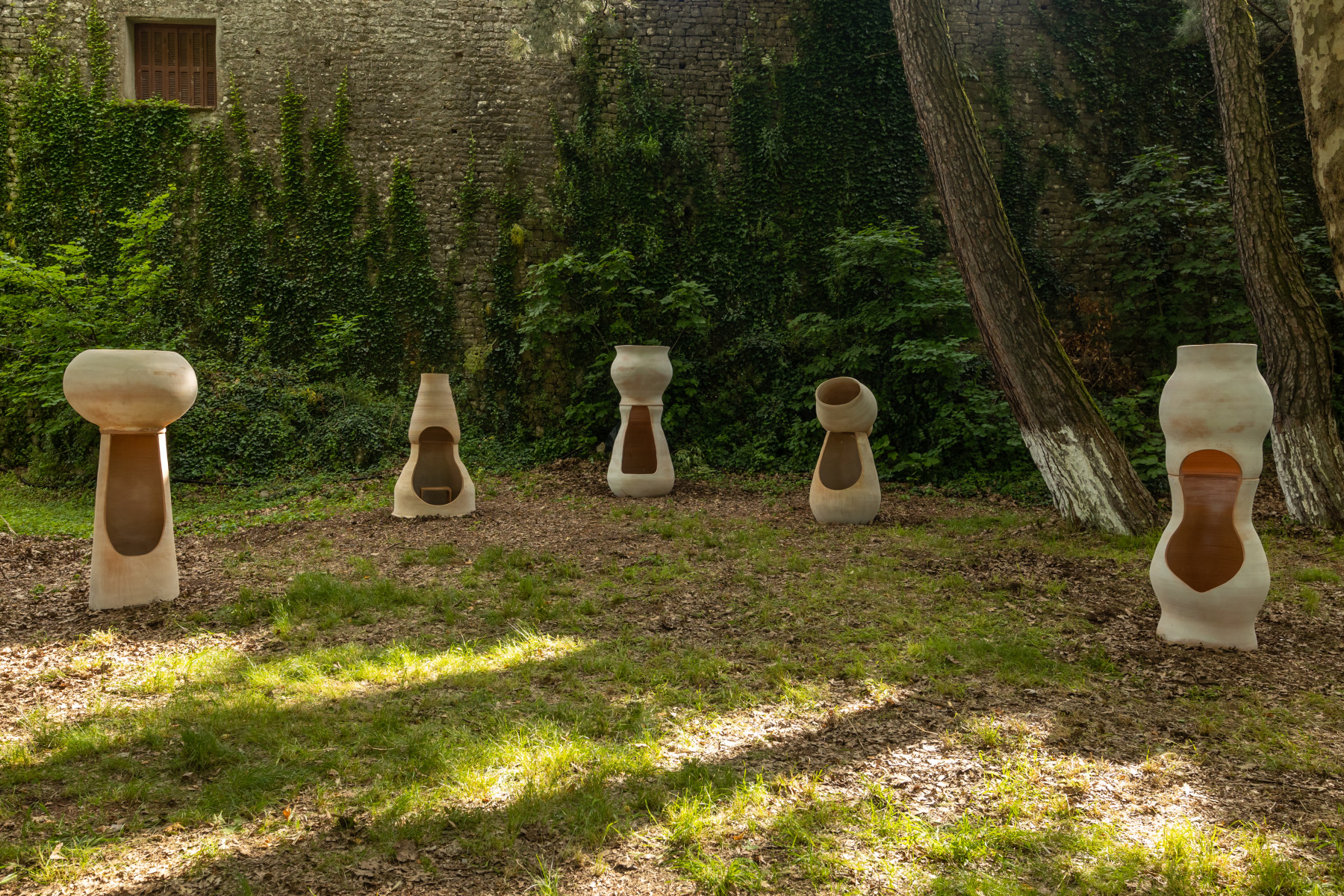
Maria Louizou, Six Breaths per Minute, 2021. Photography: Pinelopi Gerasimou
Like in many Greek tragedies, the events of Plásmata ΙΙ unfold in front of the city walls. In this case, these are the ancient walls of the Ioannina Castle setting the stage for an extensive open-air exhibition produced by Onassis Stegi, which this year relocated from Athens to the lakeside Epirus city. Situated near the Albanian border, Ioannina is rich in undercurrents. From Hellenistic temples and Byzantine walls to frescoes-filled monasteries, towering mosques and one, still-standing synagogue, its streets are filled with indications of the region’s shifting history. For several summer weeks, the promenade starching along Lake Pamvotis is inhabited by massive LED screens, performative installations, and other artistic interventions that use contemporary, mostly digital tools to reflect on age-old questions. The lake, the walls and its hidden rooms and passageways transform into an expanded exhibition space. Yet as such, they mostly remain a background: a setting rather than a site.
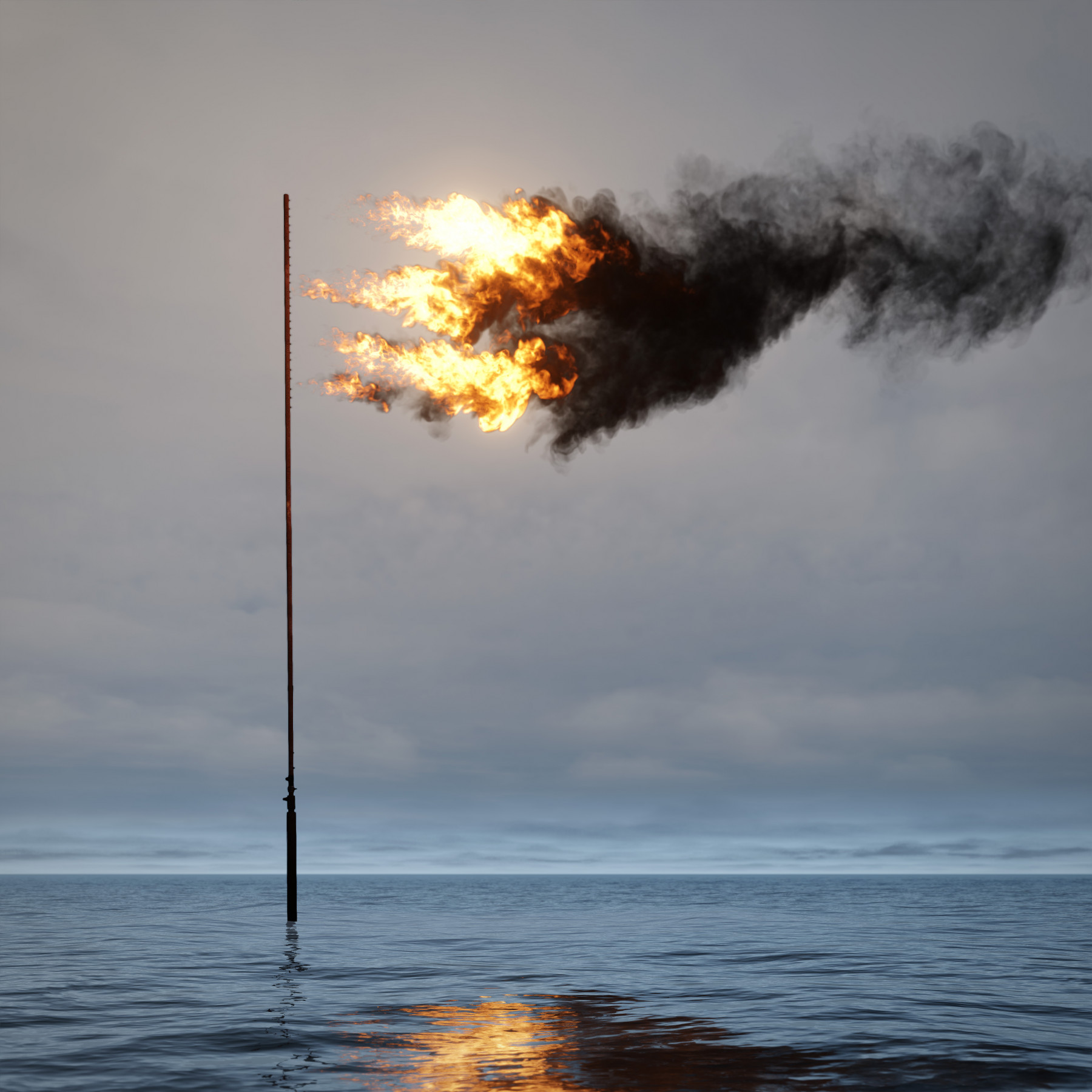
John Gerrard, Flare (Oceania), 2020
The exhibition encompasses nineteen new artworks and ten existing public pieces, monuments, and several other points of interest that the exhibition attempts to highlight and re-frame. Eleven out of the nineteen new works were specially commissioned for the show, and several of them reflect months-long research that was conducted by the predominantly Greek artists in Ioannina and its surrounding. The research group WordMord produced a sound installation, Glωssic Isnaf (2023), resulting from a long exploration of gender formation and interspecies articulation in the regional dialect echoed in local tales and myths. Isnaf (meaning “guild” in the Ioannina dialect) is the name of a non-binary character born in the depths of Lake Pavmotis, whose language is a hybrid of these speech modalities and the materiality of his natural birthplace. The soundscape of this fictional narrative, partially indistinct also for a Greek-trained ear, resounds in a passage inside the walls, where abstract cutouts referring to the regional leather industry hang from above.
In Glωssic Isnaf, as in many other works on show, Artificial Intelligence (AI) engines were used in the research phase and production of the pieces. Maria Varela worked with AI in /ˈfilo/ (2023) to study traditional ‘terzidic' embroidery patterns and to design a new motif manifesting as a Filigree, a wire-bending technique favoured by the local silversmiths. Closer to the lake, a large-scale LED screen continuously generates images based on the description of the scenery it is blocking — an island on a lake with a monastery. A camera placed on the back of the screen additionally captures passersby, who in turn become part of the flow of generated imagery. Adding a 21st-century flair to the age-old question of representation, stretching from Leon Battista Alberti’s thoughts on painting as a window to the outside and René Magritte’s representational illusions, Matthew Niederhauser and Marc Da Costa’s Parallels (2023) is an immediate machine of interpretation. Having studied centuries of human imagination, the device offers an entertaining yet eerie demonstration of the accelerated technological shift currently underway.
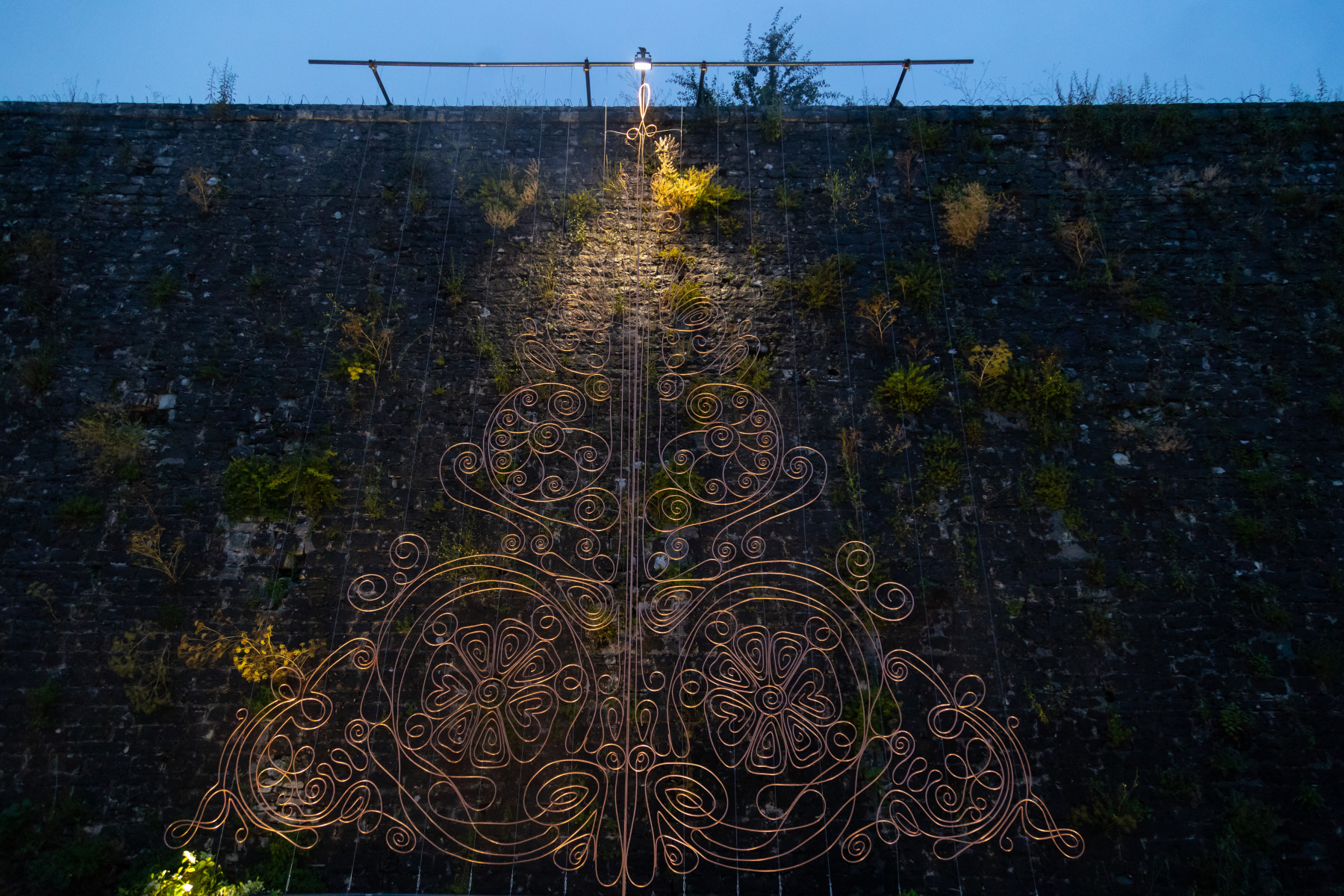
Maria Varela, /ˈfilo/, 2023. Photography: Pinelopi Gerasimou
Another piece that harnesses AI technology is Maenads collective’s The Passing (2023), a multi-channel sound installation that expands in the old soldiers’ dormitories within the southern gate of the castle. Studying the local Epirus tradition of polyphonic lamentation — ‘moiroloi’ — a generative composition of digital and human voices fills the harsh-red lit space. The work Six Breaths per Minute (2023) by Maria Louizou is also inspired by these polyphonic lamentations. Five ceramic human-size sculptures invite the audience to step inside and experience their voice distorted and amplified by the echo of the ceramics. Every so often, performers activate the work and propose a new interpretation of these laments. Though not referenced directly, these two works also connect to the old traditions at Dodona, which was second in importance only to Delphi. As part of the oracular consultation in Dodona, sound was used to create a mystical atmosphere and convey the messages of Zeus. Initially, multiple cauldrons and tripods were struck simultaneously to produce a reverberation, later involving the use of a single cauldron and the walls of the temple to amplify the sound. These lamenting sounds also became hauntingly actual by a tragically far more recent echo: two days before the opening in front of the southern coastal town of Pyloson, the shockwaves of the catastrophic capsizing of a vessel carrying hundreds of people seeking refuge in Europe were felt in Ioannina. The celebratory concert and DJ sets were cancelled, in alignment with the announced nationwide days of mourning.
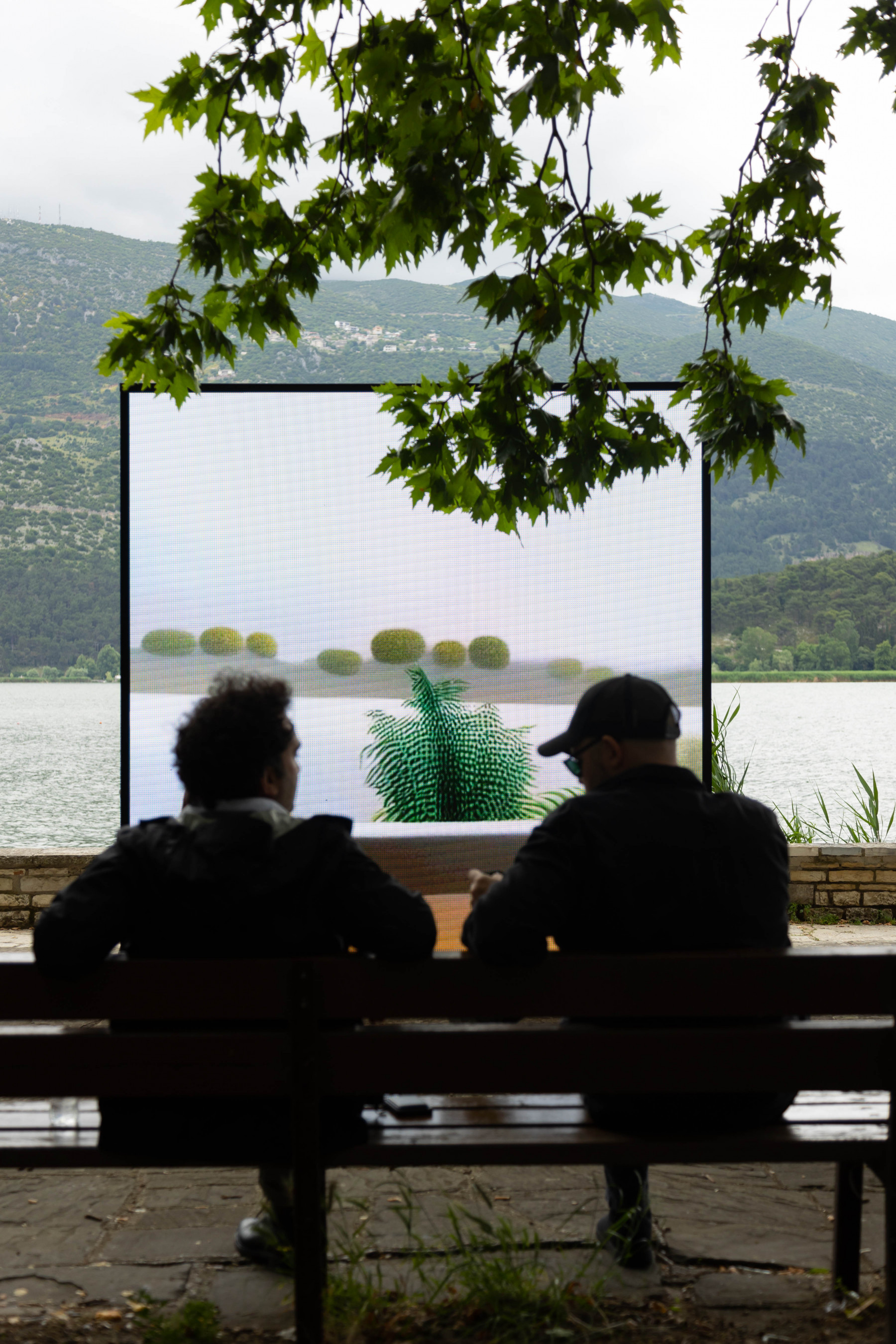
Matthew Niederhauser and Marc Da Costa, Parallels, 2023. Photography: Pinelopi Gerasimou
Art placed in public space is more confronted with the question of the audience than art displayed within a white cube. And indeed, the presentation of the works Plásmata ΙΙ is affective, engaging and impressive, while the works themselves are fairly easy to access and comprehend. Perhaps the framing of the ten existing artworks and points of interest along the promenade was an attempt to balance this tendency. It is known that we do not look at the things we see most often. Hence this gesture sought to re-expose the space the exhibition inhabits. In the case of Christos Lamprou’s marble sculpture A tear for Kyra Frosyni (1996), both the monument for the victims of the Nazi occupation and a more recent stencil intervention that covered it with anti-patriarchy texts and symbols were framed by an adjacent text. Spotlights and texts also accompany a sealed doorway in the wall, evidence of forgotten electricity infrastructure, and even point to the impressive trees towering across the bank. These Platanus trees, which are not native to the region, were imported in the early 20th century. Placing the spotlight on them reminds us that also what appears natural or eternal is in many cases a forgotten intervention.
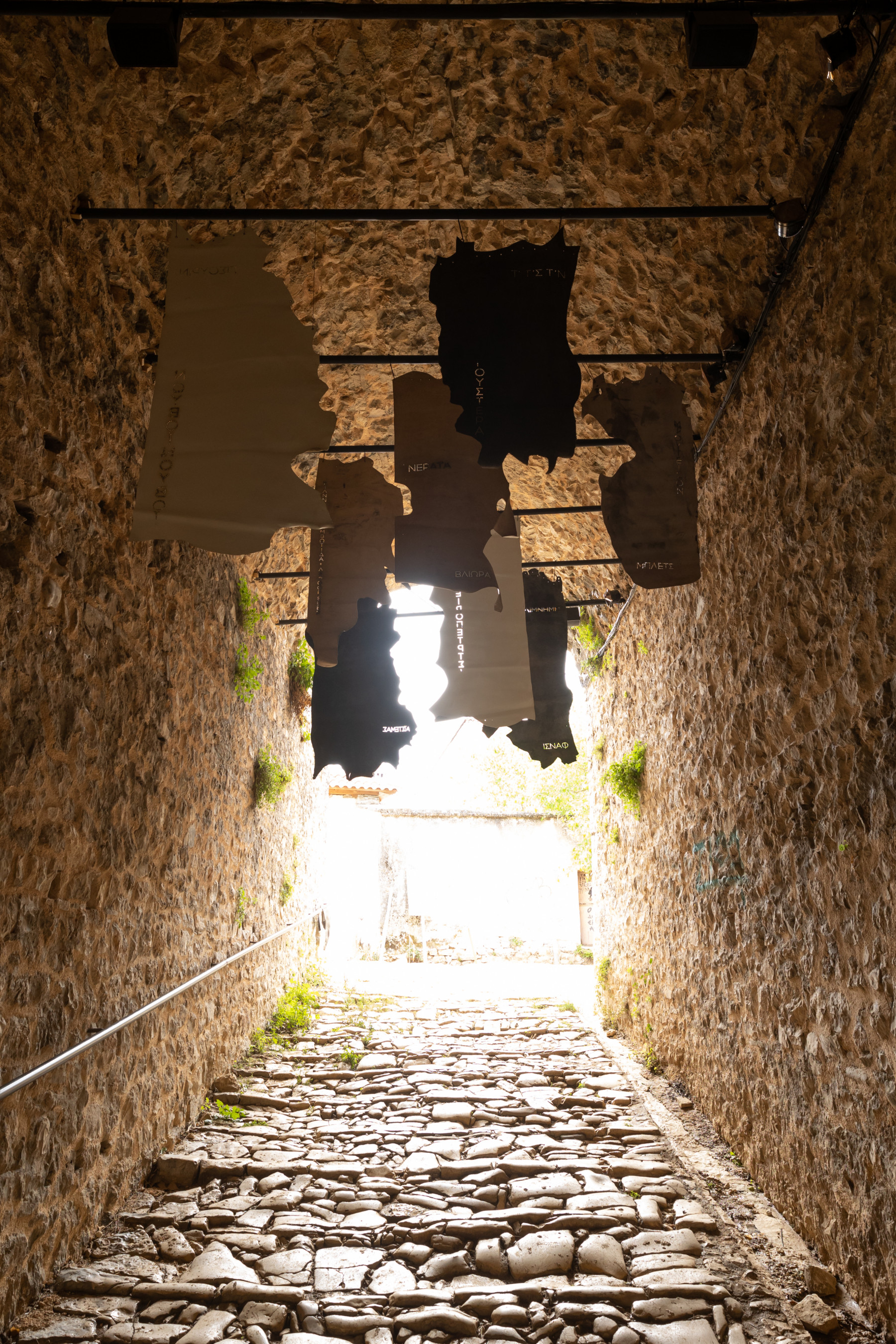
WordMord, Glωssic Isnaf, 2023. Photography: Pinelopi Gerasimou
By revealing the specific characteristic of the sites, this act of curatorial framing inadvertently highlights the absence of such site-specificity in most of the exhibited works. While many pieces draw inspiration from the city, region, language, and lake, they do not fully engage with the specificities of their immediate surroundings. In a city that is so culturally sedimented as Ioannina, where every street and corner is steeped in history, one would have hoped for these magical moments of intervention, where an artwork reveals a place in its concrete particularity and re-articulates it. The impressive setting of the castle walls and its hidden chambers largely remain just that — a backdrop — rather than an integral part of the artistic dialogue.
As the sun slowly set behind the mountains, the LED screens and spotlights shone bright and lit the way to thousands of (mostly local) visitors travelling along the promenade, at times queuing up in long lines to enter the more concealed venues. One does not often encounter media or digital art in the open, beyond the confines of traditional institutional boundaries or secluded computer screens. The significant costs and technical expertise required to produce such exhibitions, along with the bureaucratic hurdles facing events in public space, make them far too challenging for many cultural institutions to undertake. Yet the resulting level of engagement and outreach is far greater than most museums can hope for. Plásmata ΙΙ positions itself as an exhibition that caters to a wide audience, inhabiting a space between art and entertainment. Some critics may dismiss this approach as overly mainstream and lacking complexity. Yet in its commitment to commissioning new works and promoting research, Onassis Stegi and the curatorial team place a strong emphasis on in-depth, meaningful artistic endeavours that keep accessibility in mind. And that’s a worthy challenge.
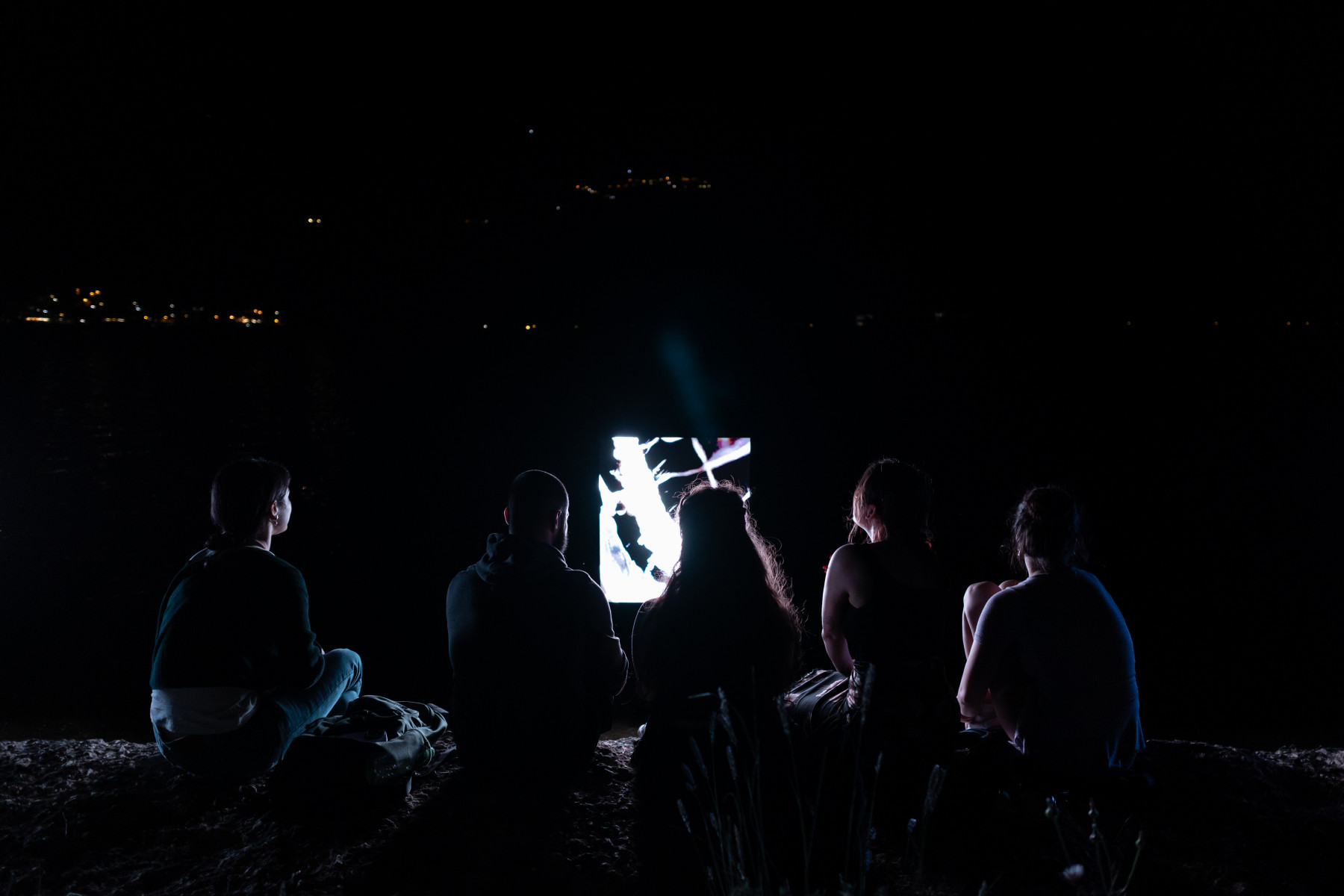
Entangled Others, Encounters with Aquatic Chimeras, 2020. Photography: Pinelopi Gerasimou
Plásmata ΙΙ: Ioannina. Human, Strange, Digital, Metaphysical
16/06 – 09/07/2023
Onassis Stegi
Dionisiou Filosofou
Ioannina 452 21, Greece